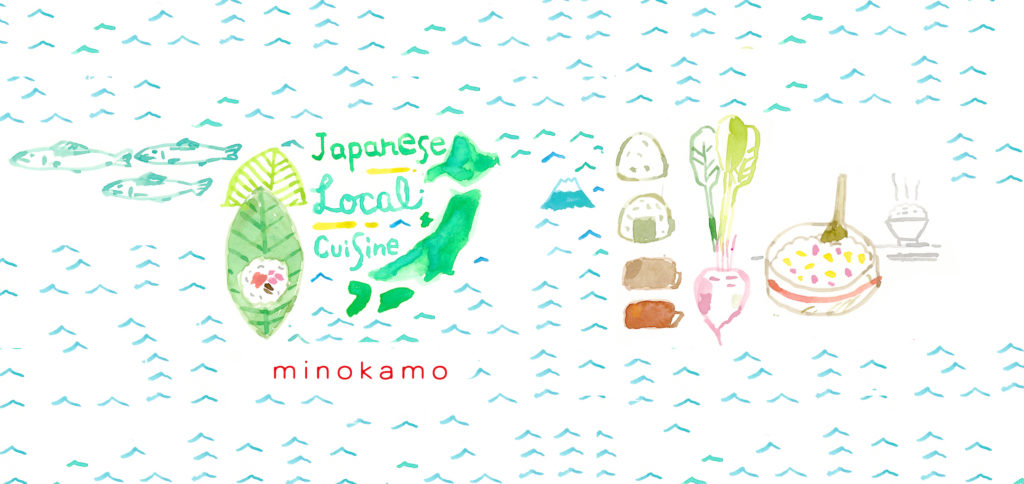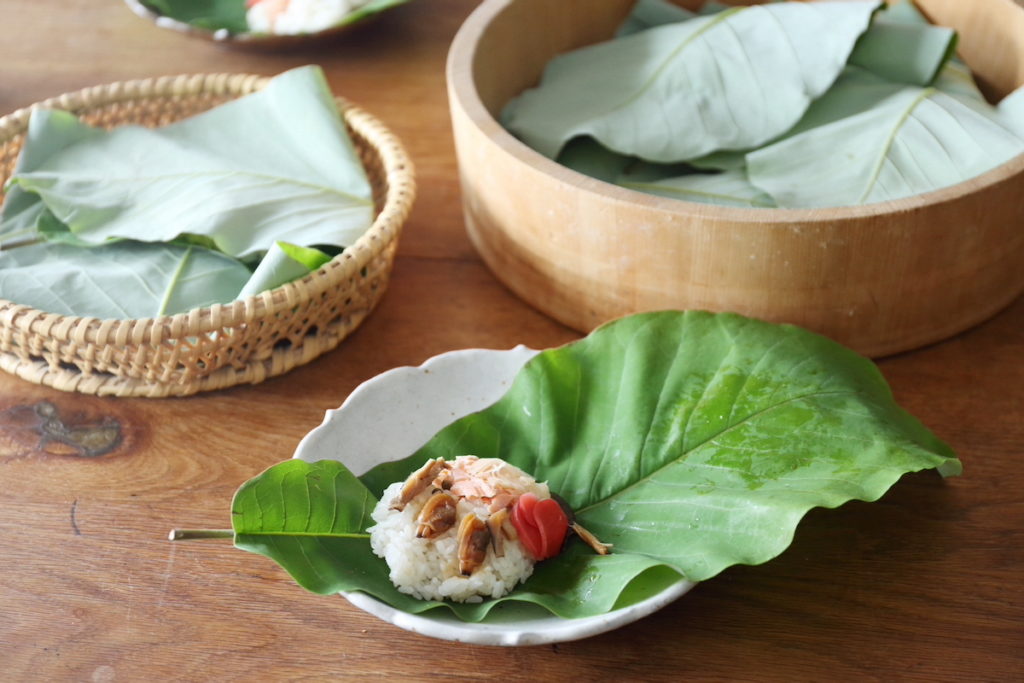
Ingredients (makes 20 pieces)
4 cups rice
750 cc water
A (combine in advance)
80 cc vinegar
2 tbsp sugar
1 1/3 tsp salt
4–5 fillets benizake / salted salmon
3 tbsp vinegar
1 tsp sugar
About 100 g each tsukudani / ingredient of choice simmered in soy sauce
About 100 g benishoga / red pickled ginger
Here, I used tsukudani of asari clam, Japanese pepper, and shiitake mushroom with pickled ginger and beet.
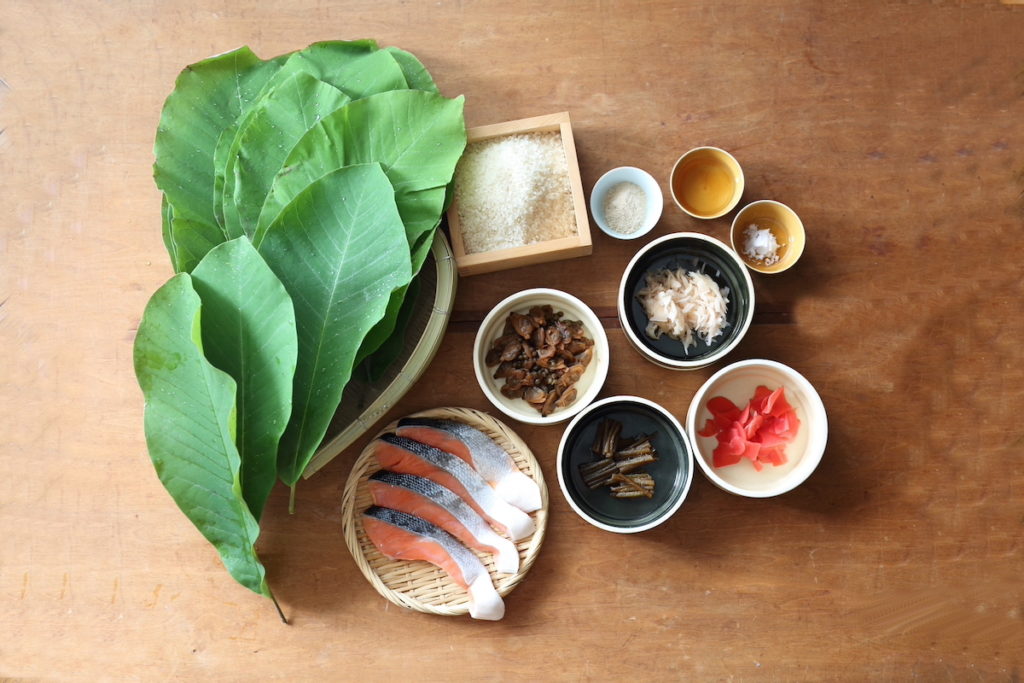
How to Make
1. Cook the rice with less water than usual, taking account of the vinegar that will be added later. Meanwhile, grill and flake the salted salmon, and combine with vinegar and sugar while still warm.
When the rice is cooked, stir lightly with a rice paddle, transfer to a wooden tub or vat if possible, combine with the sweet vinegar (A) while still warm, and “slice” the rice with the rice paddle to stir.
2. Line a clean table with the hoba leaves with the dark green upper side facing up. Place a golf ball-sized lump of rice on the base half of each leaf, flatten the rice, and top with the ingredients.
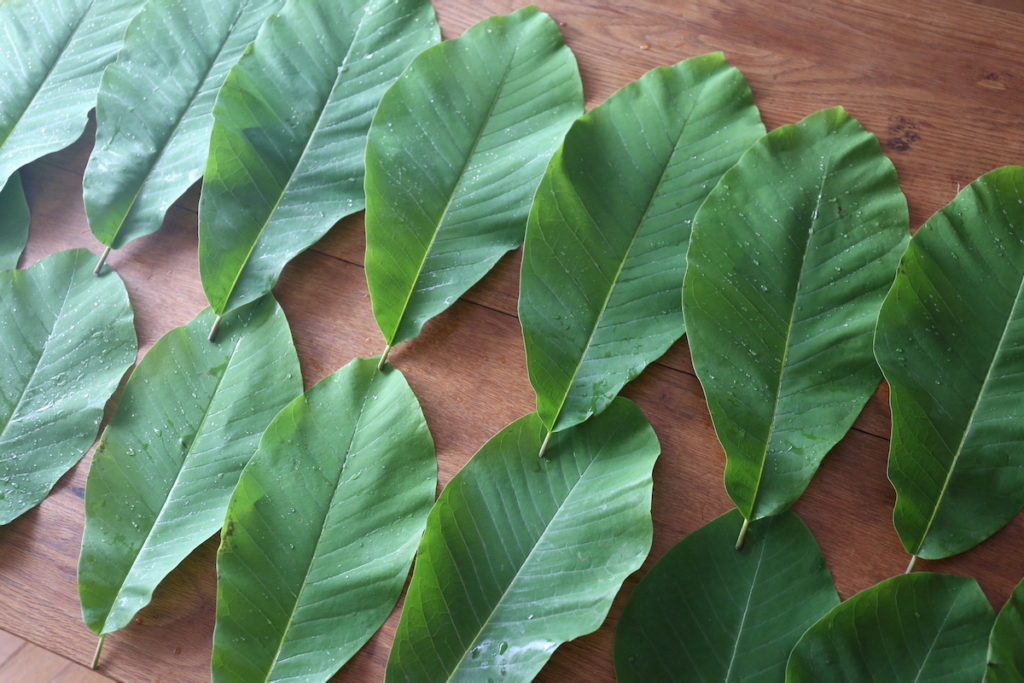
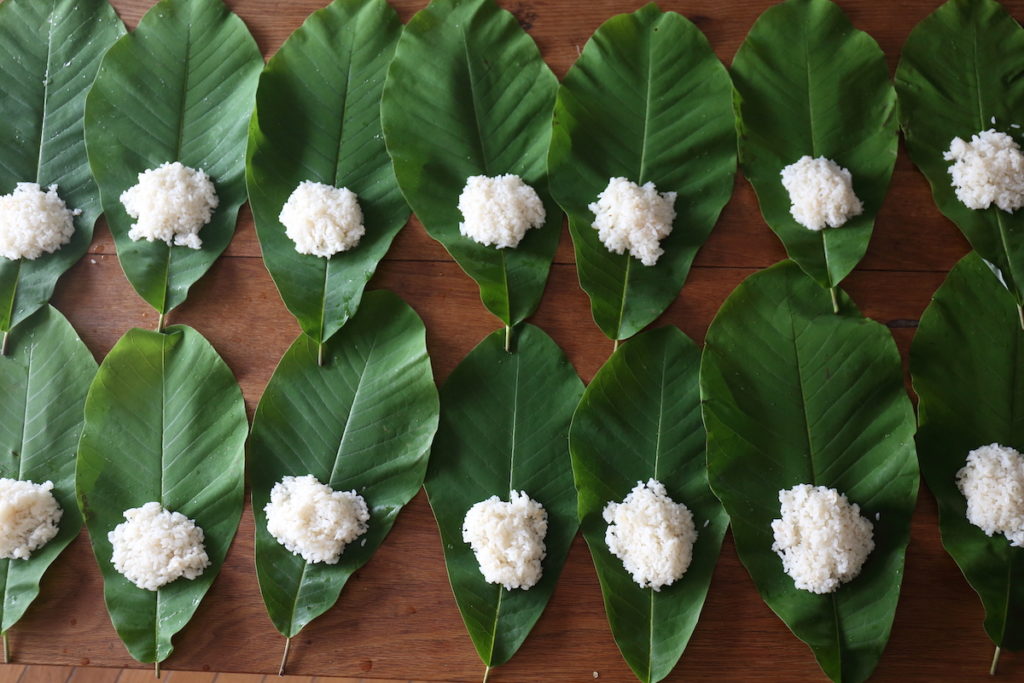
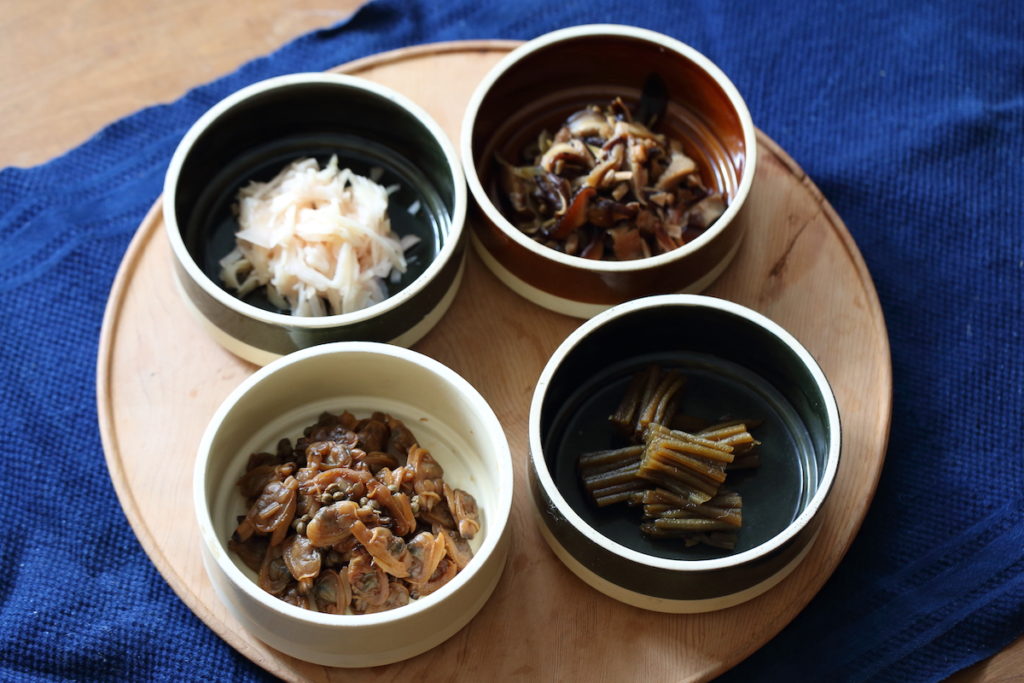
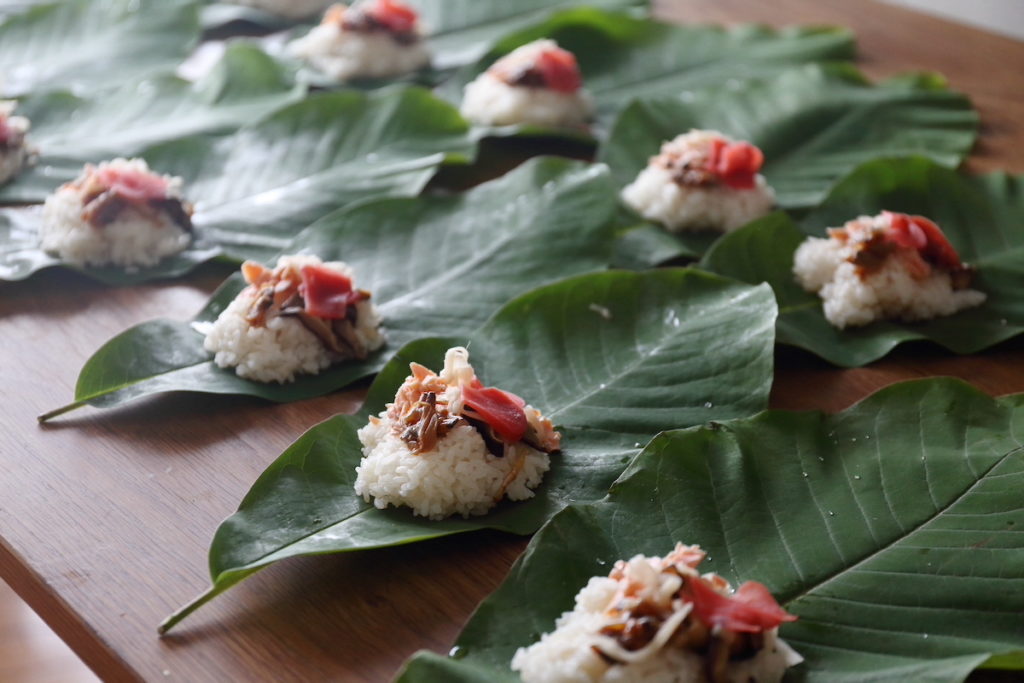
3. Fold each leaf in half so as to wrap the rice. Layer the pieces in a box or other container and press for about an hour (this step can be omitted).
If hoba leaves are not available, top with shredded egg and enjoy as chirashi-zushi.
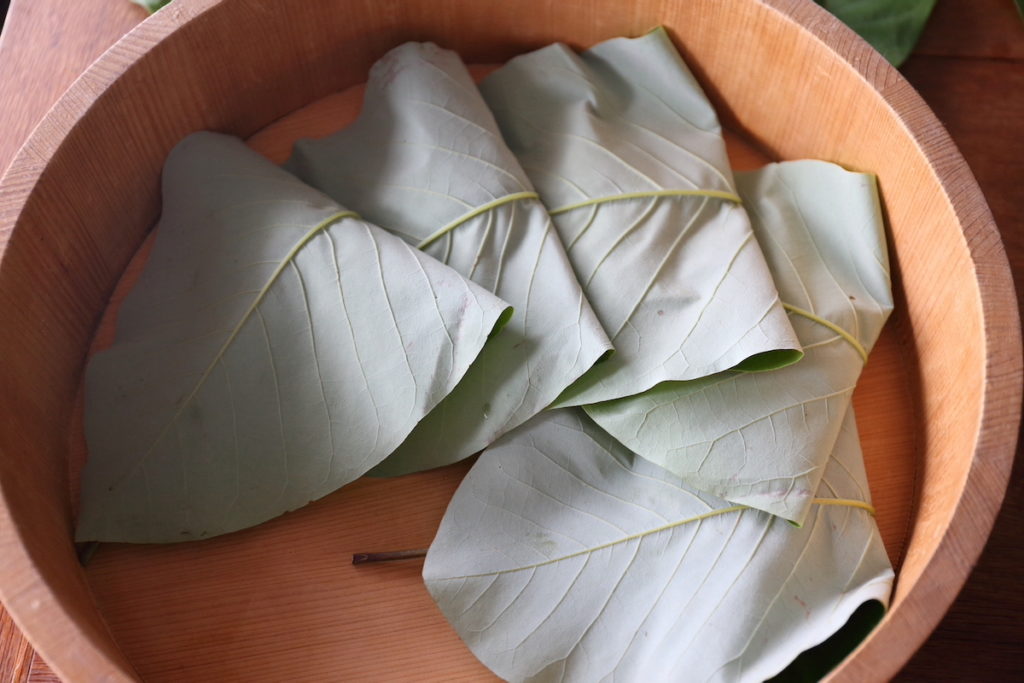
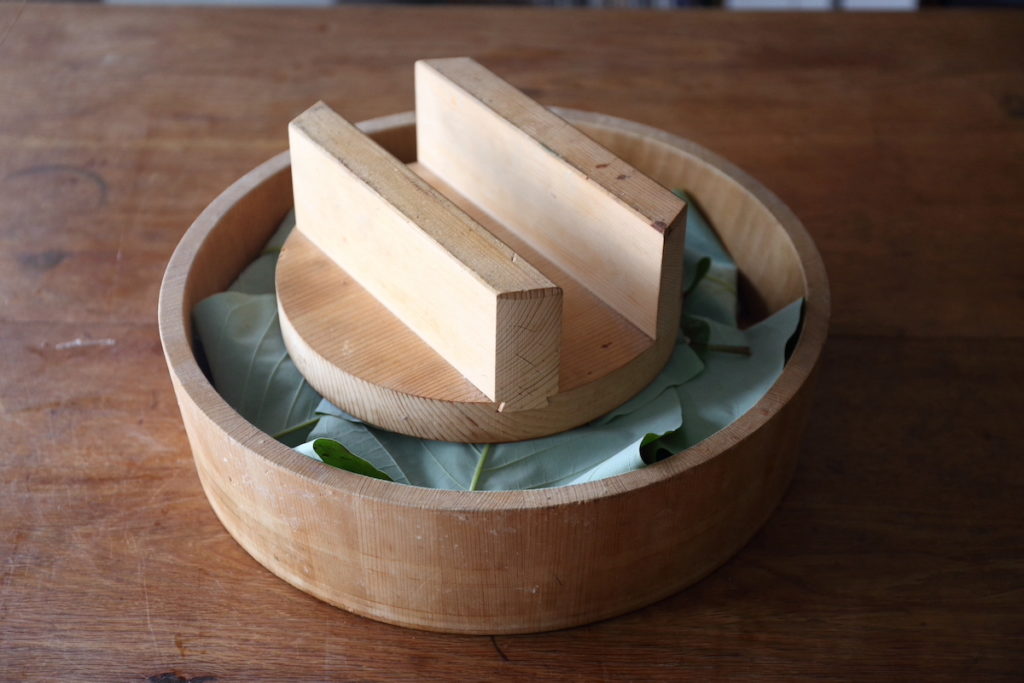
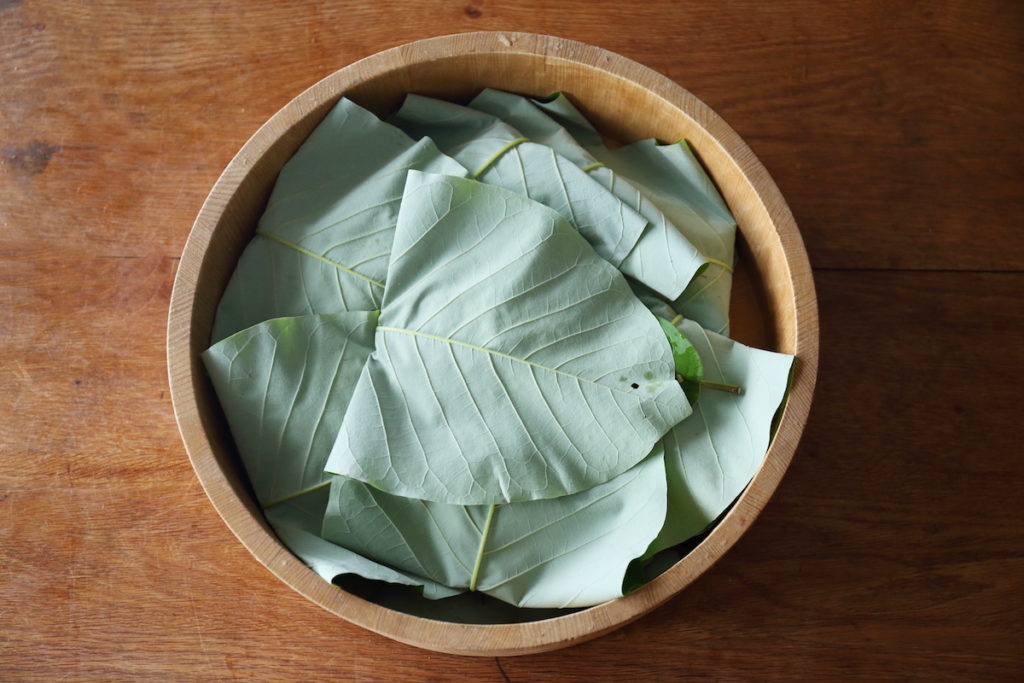
A delightful harbinger of the early summer in Gifu Prefecture is hoba-zushi—sushi wrapped in leaves of the Japanese bigleaf magnolia, twice the size of my palm. The leaves have antibacterial properties and keep the sushi rice from sticking to the hands, making this a convenient food for people who go to work in the mountains or the fields. I remember women relatives making hoba-zushi for me each year. The treat is also sold in stores and made at every local home. The standard batch for family gatherings and for sending to grandchildren who have moved to the city is 1-sho (roughly 1,500 grams) of rice, which makes fifty to a hundred pieces. The hoba leaves are lined up in neat rows on a large table and topped skillfully and rhythmically with the sushi rice and other ingredients. The bright colors create a simple work of art as if splattering paint onto a white canvas.
I asked one local mom to share her recipe for vinegared sushi rice. For 1-sho of rice, she uses 200 cc vinegar, 180 grams sugar, and 1 tablespoon salt. Being a seasoned cook, she told me this from memory, without checking her notes. The ingredients vary from family to family but typically include grilled salted salmon or sweet pickled mackerel, sweet tsukudani of asari clam or butterbur, shiso seeds, and red pickled ginger. In recent years, shredded egg may be added for a splash of color.
Apart from hoba-zushi, many Japanese rice dishes and snacks are wrapped in persimmon leaves, bamboo leaves, and myoga ginger leaves. Leaves make wonderful wrappers because they return to nature in the end, and above all, they make the food inside look delicious.
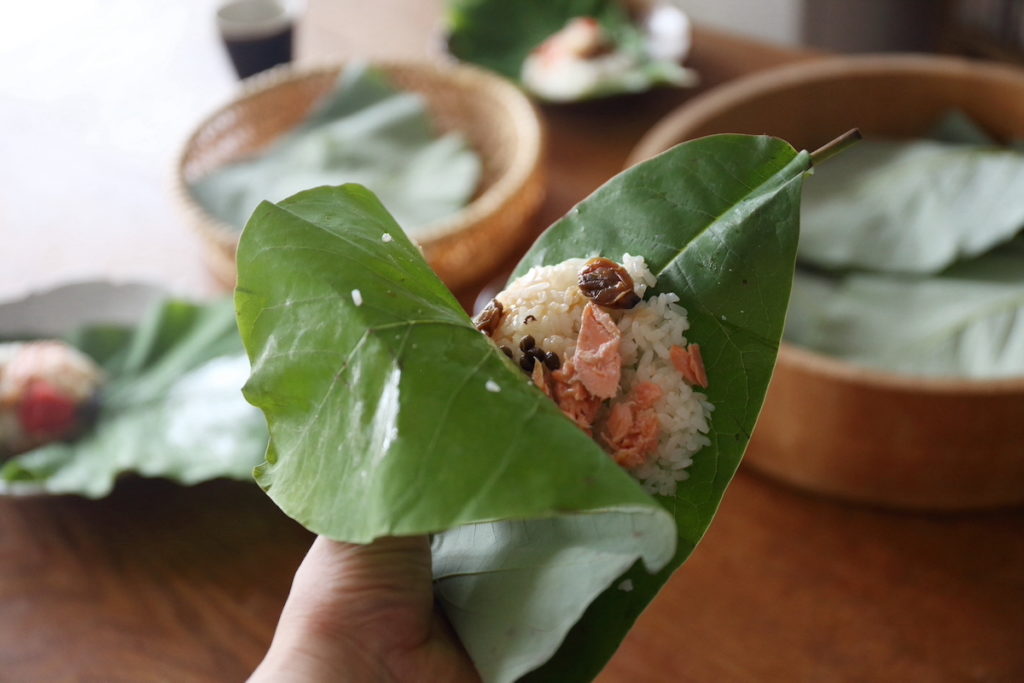
minokamo | Cookery expert / Photographer
Gifu Prefecture native minokamo’s culinary adventures were inspired by her fond childhood memories of cooking with her grandmother. She researches, writes about, and arranges regional dishes that capture, through their preparation and presentation, sensory enjoyments inspired by local climate, history, and lifestyles. Ryori tabi kara tadaima(Back from a Cooking Journey; Fudosha), published in September 2020, is a collection of recipes from minokamo’s visits to homes up and down Japan.
